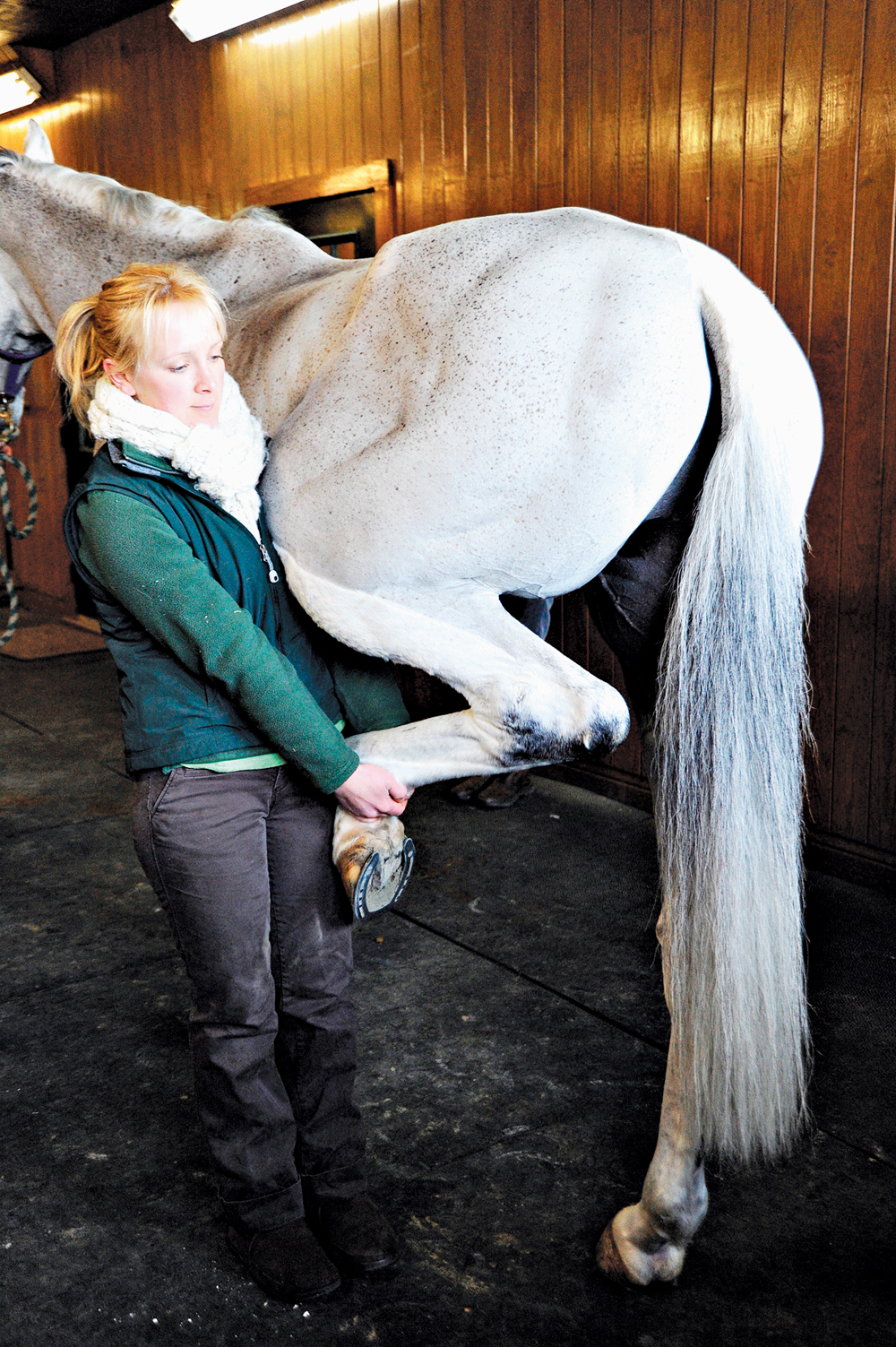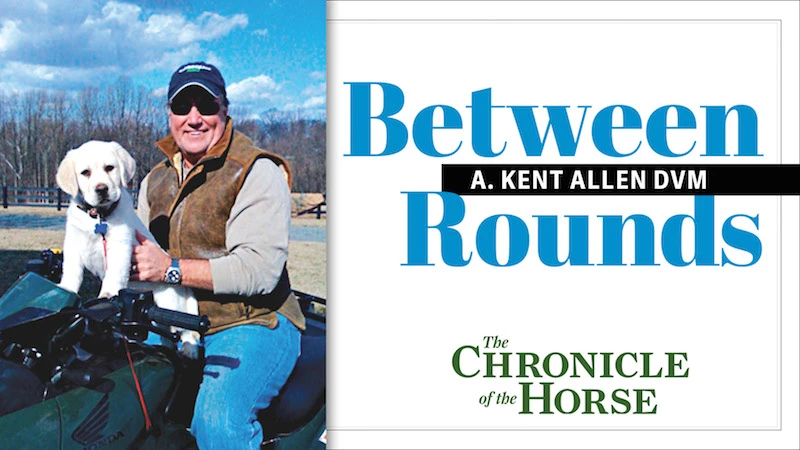Our columnist tells how to best prepare—whether you’re buying or selling—for what is sometimes a dreaded experience.
Buying or selling a horse can be a traumatic experience. On one side the buyer has found what he hopes is the perfect horse and desperately wants it to be “The One.” On the other side of the fence is the seller, who hopes to move a horse to a good home and make some money in the process. There often are a variety of advisors or agents on either side of the equation who are expected to give their professional opinion on the suitability of the horse.
The veterinarian examining the horse is expected to provide an objective opinion on the suitability and soundness of the horse for the buyer and should declare any conflict of interest prior to the examination. For example, if the veterinarian has worked on the horse previously he should let the buyer know that, and the buyer should obtain a written release of information from the seller so that the previous medical history can be disclosed. The exam can certainly be done by a veterinarian who has worked on the horse previously as long as all parties understand the veterinarian is working for the buyer solely and are aware of any potential conflict of interest.
Not So Simple
Those are the players. Sounds straightforward, right? So why is this the most talked about examination in the horse world? Why is it full of preconceptions and misconceptions? Why is it if you put any number of horse people together and mention the pre-purchase exam, you get a million different stories?

“The veterinarian is looking at the horse at a specific point in time with the history he is given,” said Dr. Kent Allen. Photo by Tricia Booker
It’s because people are coming at this exam from many different directions and with many prior experiences, real and perceived. Is this new, this confusion over buying a horse? No, there are many stories in old English literature on the difficulties of acquiring a horse. The U.S. Cavalry from the Old West had published material about the problems of procuring good horses from horse traders and Indians. So now we don’t feel so bad knowing this same difficulty has been ongoing for hundreds, if not thousands, of years.
Let’s address some basic premises on the exam itself. Most veterinarians involved with sport horses who are participating in a pre-purchase exam have a similar goal: to assist the rider in the physical examination of the horse to determine if the horse is suitable for the task intended. Therefore, the veterinarian’s objective is to help the rider find the correct horse, not to fail a horse.
As we delve into the complexities of the exam, I would like you to keep the following in mind: No horse is perfect. All horses have some imperfections that will be major or minor in magnitude depending on what the horse is selected to do in its career. The veterinarian is looking at the horse at a specific point in time with the history he is given. He does not bring a crystal ball to the exam and cannot predict how a particular animal will perform in the future. The veterinarian performing the pre-purchase exam is not the buyer’s insurance policy for the horse staying sound. If the buyer wants that, he should purchase a loss-of-use insurance policy, and be sure that the company will issue a policy on the horse in question.
ADVERTISEMENT
It’s always preferable to evaluate a horse that is currently doing the job it’s intended to do, rather than evaluating a youngster with no experience and speculating on what the horse might be able to do in the future. So now that we understand the players and philosophy, where do the problems arise?
The Buyer
Managing expectations is the biggest challenge. Any time you are purchasing a horse you worry about whether it will stay sound and healthy in the future. The pre-purchase exam is the most thorough exam most horses will have in their lives, and it’s still the buyer’s best defense against present or future lameness.
The selection of the veterinarian, type of exam and amount and selection of radiographs are all ultimately the buyer’s decision in consultation with his veterinarian and advisors. Limiting the veterinarian’s examination or restricting the number of radiographs will decrease the amount of information gleaned and restrict the number of things the veterinarian can tell you about the horse.
There obviously has to be some rationale about how much money to spend on the exam, and usually that’s based on the value of the horse. One of the most important things to do as a buyer is to be involved in the examination or at least talk to the veterinarian performing the exam beforehand to express your goals and concerns. The buyer’s role is to be the junior partner in the horse’s pre-purchase exam. The veterinarian will be the knowledgeable senior partner, who hopefully has done hundreds of exams, but the junior partner will be asking questions and requesting explanations. If all you do is ask the veterinarian at the end of the examination “What would you do?” you have not really delved deeply into the process.
Ask your veterinarian who to use if the pre-purchase is out of town, and ask if he or she will help you interpret the exam and radiographs. There will likely be some radiographic findings. Ask what they mean and what the significance is for the horse’s intended use. Can the issue be managed, and if so, how expensive is that likely to be? Ask how many horses with similar findings he or she has seen previously that went on to have trouble or went on to have successful careers. Ask if a second opinion by a sports medicine clinician or a radiologist would be helpful. Maybe you can track down old X-rays if there is a question about comparing current radiographs to old ones to determine if the area in question has changed. The best way to avoid buyer’s remorse is to get involved early in the exam, because ultimately it’s your decision to make.
The Seller
Preparation is the key here. Successful horse sellers have horses that people want to buy and have the horses well prepared for the pre-purchase examination. This means that the horses have been examined by the seller’s veterinarian and are sound and ready to go. Not having the horse looked at prior to the pre-purchase exam is hoping for the best, and remember, hope is not a strategy.
ADVERTISEMENT
Some sellers even have a current set of X-rays available for the buyer’s veterinarian to review before the pre-purchase exam begins. This has the distinct advantage of making sure there aren’t many surprises in the radiographs. The seller should be familiar with the horse’s medical and competition history and any vices and be prepared to disclose them. At Virginia Equine Imaging we have a form that details the prior history of the horse that must be filled out and signed by the seller before the exam can start.
Recently, litigation involving the pre-purchase exam has occurred in several states and has ultimately been decided in favor of the buyer on the basis that the seller withheld past medical history. The courts stated that not disclosing relevant information when asked was an attempt to defraud the buyer.
Smart sellers also request, before the exam begins, that the buyer release information that rightly belongs to the buyer (X-rays, etc.), if there is a problem detected during the exam. This is a simple request beforehand that gets considerably more complicated after the exam is completed. Most veterinarians like this approach because if there is a problem, lameness or abnormal radiographic findings, they are able to talk to everyone and release the information to the seller’s veterinarian.
So if you are a seller, make sure you have your facts straight and your horse prepared. If the horse has a problem during the exam, don’t get upset; you didn’t really want to sell a lame horse anyway. Be interested in the concerns of the buyer and veterinarian, and see if there is a way to overcome the problem. If you’re interested in selling this horse you need to understand the issue and fix it. Most of the time all parties are interested in putting the correct horse with the right rider, so be a part of the solution not the problem.
So, one of the most challenging days of your horse’s life is almost over. Like most other things in a horseman’s life, you get through this successfully with preparation and communication. Hopefully, the examination has gone well, the horse was sound on the day, and radiographs have been read with no significant abnormalities. The blood work has been submitted, and the veterinarian is writing up the report. All in all a good day, until you have to do it the next time.
A. Kent Allen received his veterinary degree from the University of Missouri in 1979. His practice currently focuses on top-level sports medicine, lameness and diagnostic imaging at Virginia Equine Imaging in Middleburg, Va., and he’s certified in equine locomotor pathology. He is chairman of the U.S. Equestrian Federation Veterinary and Drug and Medications Committees and serves on the Board of Directors. He is the contact veterinarian for the Fédération Equestre Internationale in the United States and the USEF and answers medication questions for veterinarians and competitors around the nation and the world. He is also the vice chairman of the FEI Veterinary Committee. He began contributing to Between Rounds in 2009.














